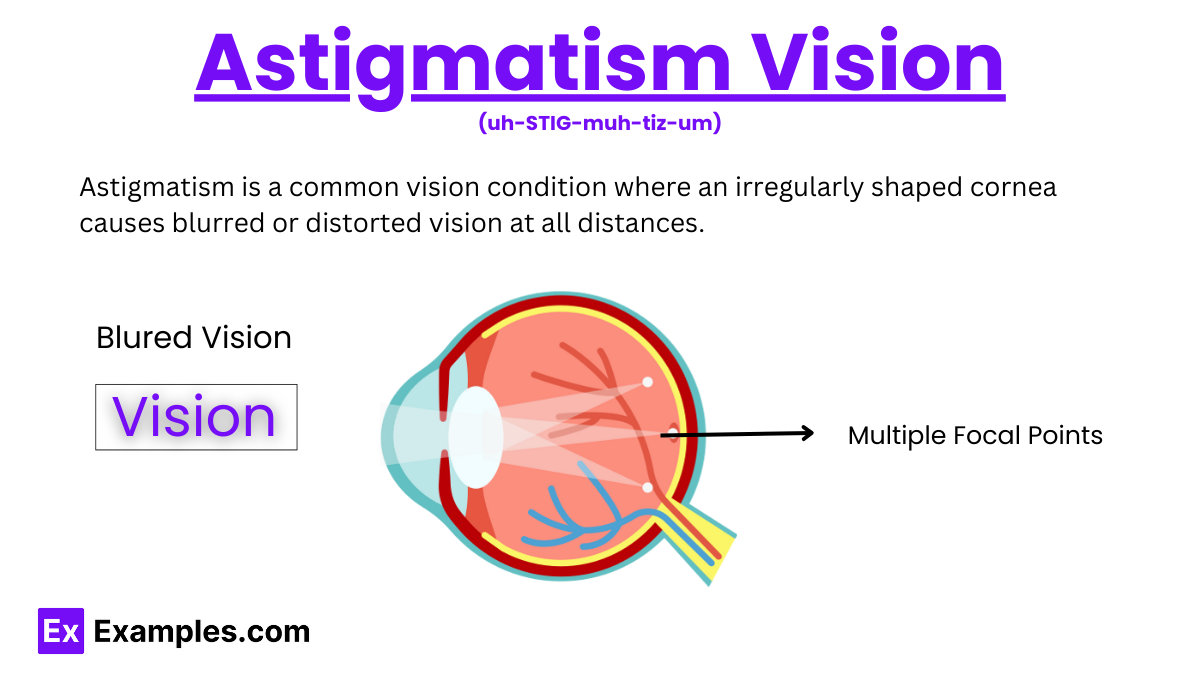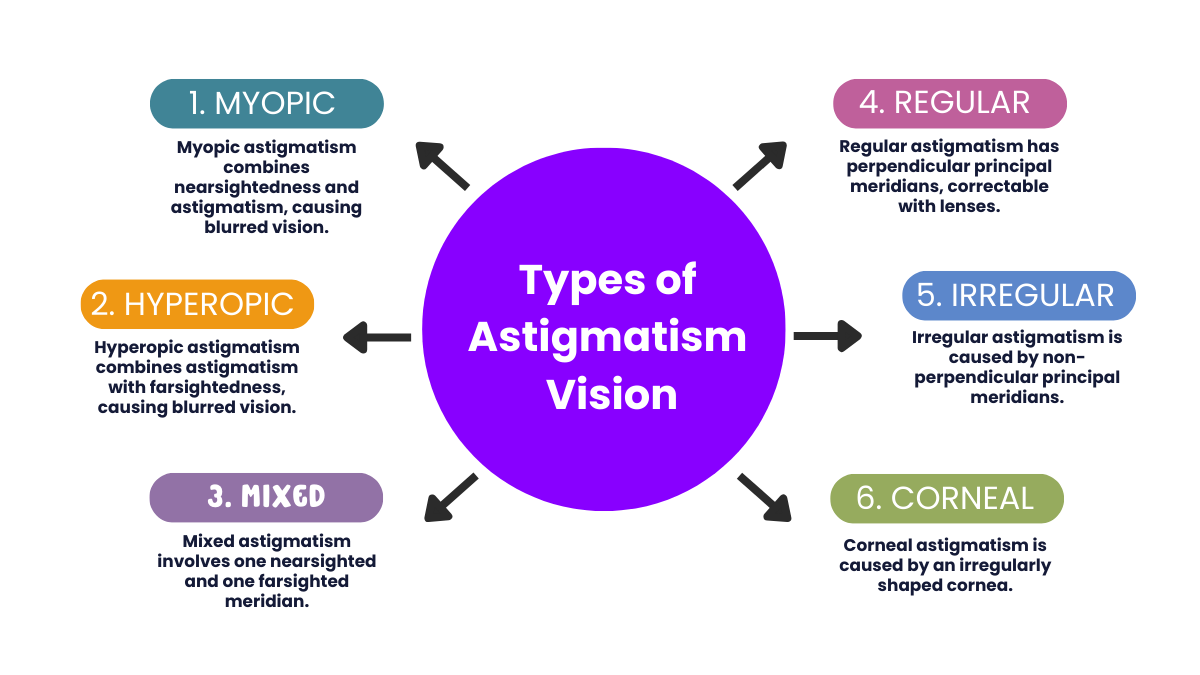What is astigmatism?
A condition where distant objects are blurred
A refractive error caused by an irregularly shaped cornea
A type of eye strain from prolonged screen use
A degenerative disease affecting the retina


Astigmatism is a common vision condition caused by an irregularly shaped cornea or lens. This imperfection prevents light from focusing correctly on the retina, leading to blurred or distorted vision at all distances. Symptoms of astigmatism include headaches, eye strain, and difficulty seeing at night. It can occur alongside nearsightedness or farsightedness. Eye exams and corrective lenses or surgery can effectively manage astigmatism, improving overall vision quality and comfort.
Astigmatism vision refers to a common refractive error caused by an irregularly shaped cornea or lens, leading to distorted or blurred vision. This condition affects the eye’s ability to focus light evenly on the retina, resulting in vision problems at various distances.

Astigmatism vision diagnosis involves a comprehensive eye exam by an optometrist or ophthalmologist. Tests include visual acuity assessments, keratometry to measure corneal curvature, and corneal topography for detailed cornea mapping. Unlike bacterial infections that affect the eye, astigmatism is a refractive error, not caused by bacteria. Early diagnosis ensures appropriate corrective measures, such as glasses or contact lenses, to improve vision quality.
Astigmatism is typically caused by irregularities in the shape of the cornea or lens of the eye.
Astigmatism is quite common, affecting many people to varying degrees.
Symptoms include blurred or distorted vision, eye strain, and headaches.
Yes, astigmatism can affect one or both eyes.
It is diagnosed through a comprehensive eye exam, which includes refraction testing.
Yes, astigmatism can be corrected with eyeglasses, contact lenses, or surgery.
Treatment options include glasses, toric contact lenses, and refractive surgery like LASIK.
Yes, astigmatism can be hereditary, passed down through genetics.
Astigmatism may change over time but does not necessarily worsen with age.
Yes, astigmatism can cause eyestrain, which may lead to headaches.
Text prompt
Add Tone
10 Examples of Public speaking
20 Examples of Gas lighting
What is astigmatism?
A condition where distant objects are blurred
A refractive error caused by an irregularly shaped cornea
A type of eye strain from prolonged screen use
A degenerative disease affecting the retina
Which of the following symptoms is commonly associated with astigmatism?
Double vision
Halos around lights
Sudden loss of vision
Increased sensitivity to light
How is astigmatism diagnosed?
Visual acuity test only
A slit-lamp examination
A refraction test and eye examination
Color vision test
What type of lenses are commonly prescribed to correct astigmatism?
Bifocal lenses
Toric lenses
Progressive lenses
Reading glasses
Which of the following factors may contribute to the development of astigmatism?
Aging
Genetics
Eye injuries
All of the above
Can astigmatism be present in combination with other vision problems?
Yes, it can coexist with myopia or hyperopia
No, it occurs in isolation
Yes, but only with color blindness
No, it only affects night vision
Which surgical procedure is commonly used to correct astigmatism?
Cataract surge
LASIK
Glaucoma surgery
Retinal detachment surgery
What is a common non-surgical option for managing astigmatism?
Regular eye drops
Contact lenses designed for astigmatism
Eye exercises
Using blue light filters
Which age group is most likely to develop astigmatism?
Children only
Young adults
Middle-aged individuals
Astigmatism can affect all age groups
How can astigmatism affect daily activities?
It has no impact on daily life
It can cause difficulty in reading and seeing at a distance
It only affects night vision
It leads to complete vision loss
Before you leave, take our quick quiz to enhance your learning!

